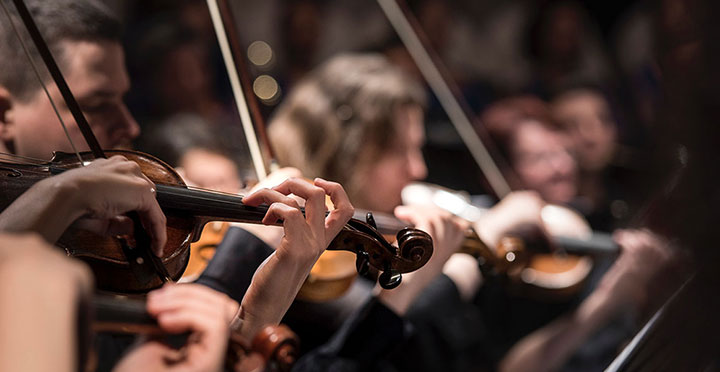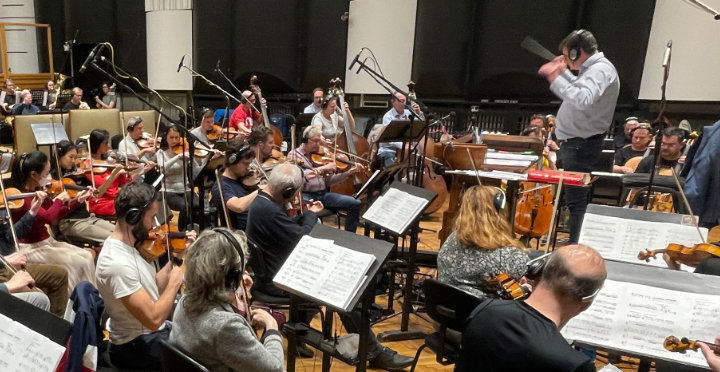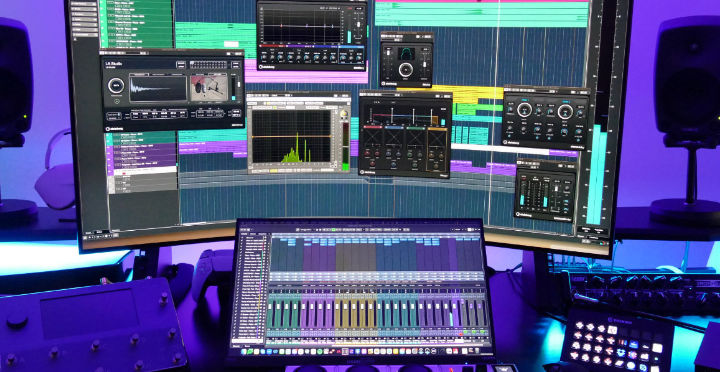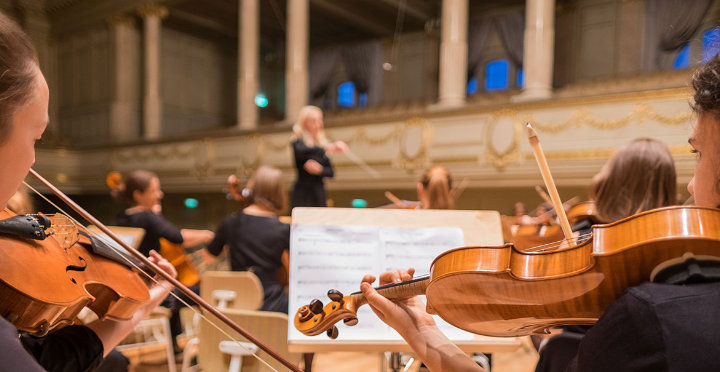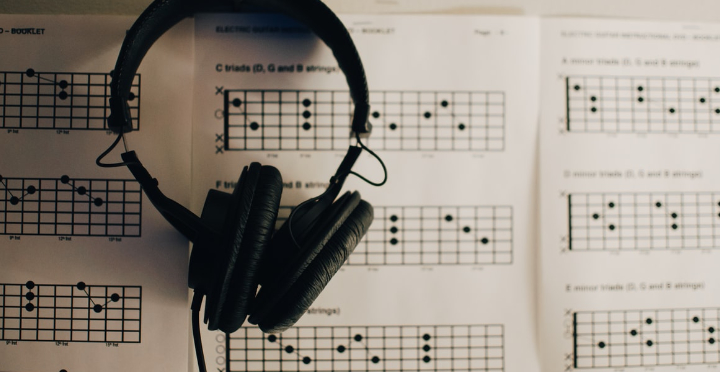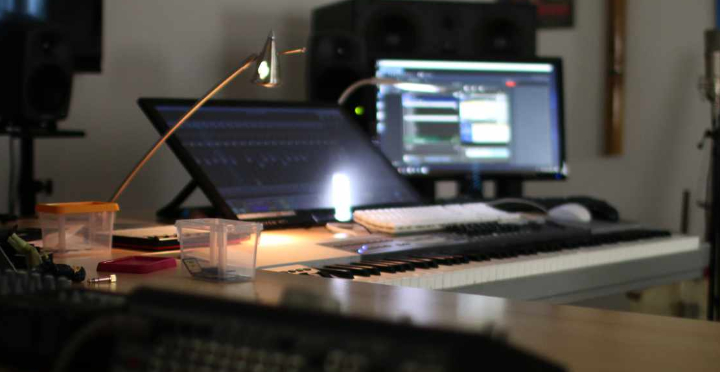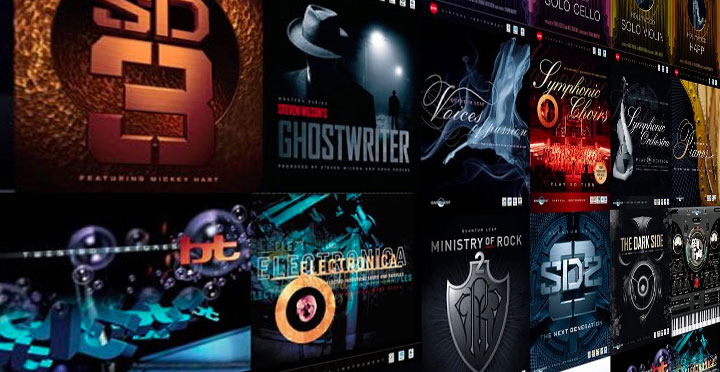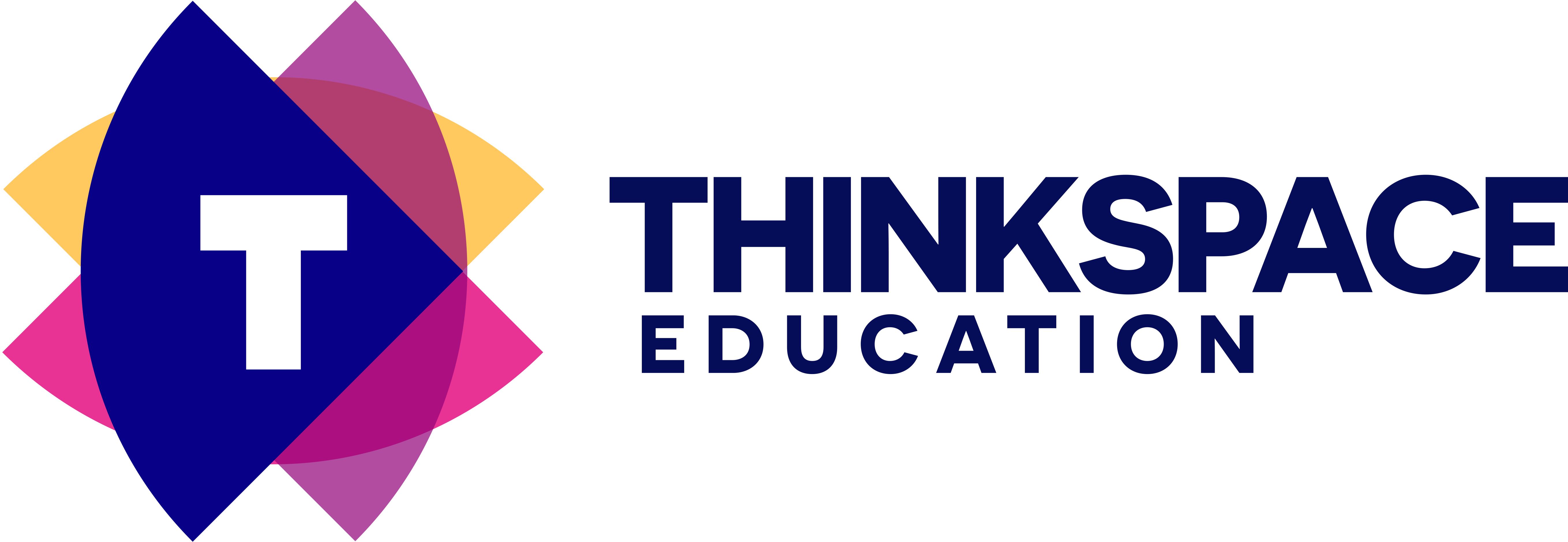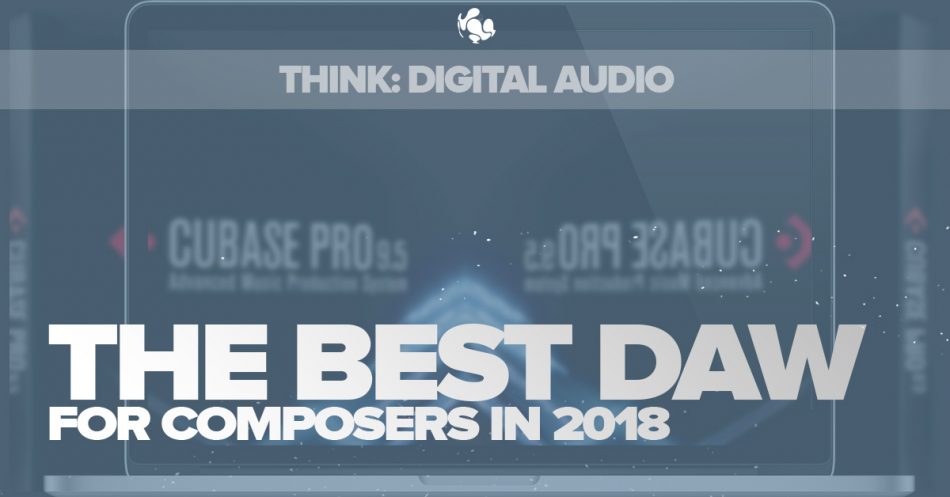– Updated 31/08/21 –
Hi there, I’m Guy Michelmore.
Like you, I’m a music composer and, in my time writing music for media, I’ve been lucky enough to work with Disney, Marvel, and Dreamworks on some really cool projects. I also run ThinkSpace Education, which is dedicated to providing you with the best training in film and games composition that you can find online.
My mission today is to answer one of your burning questions I get asked all the time: “what is the best music composing software?”
Here is the 2021 answer to that question.
Arguably the best DAW is the one you already know. The music is a lot more important than the technology so, whatever the shortcomings of your DAW, if that’s how you make the best music, then you need to ask yourself why you need to move.
If you are working in either: Cubase, Logic, Digital Performer, Reaper, and Pro Tools – these are all the ‘top of the tree’ and more than capable of scoring movies. They all have strengths and weaknesses but, if you are on that platform already, consider whether the 3 months or so it will take to become fluent on a new platform is worth it.
If you are on another piece of software, there might be some good reasons you might be considering a move.
Top of the list is that your DAW doesn’t really support video files particularly well. That means it might not support different timecode frame rates (23.97,25, 29.97DF etc). It might not allow you to set a project timecode start time or any number of other features which go from mildly irritating to complete red flag in no time once you start writing a lot of music to picture.
The DAWs that fall into this category above are: FL Studio, Ableton Live and Studio One. FL and Live in particular are inspired and inspiring pieces of software, which many film composers use. However, to score to picture properly you’ll need to be working in a piece of software that comprehensively supports video. This might mean using FL and Live to create ideas, then dropping them into your main sequence. Lots of people do this, or use Rewire to integrate a specialist DAW into their main software.
So let’s look at the main runners and riders:
Cubase 11, Logic Pro X, Digital Performer, Reaper 6 and Pro Tools.
Cubase Pro 11:
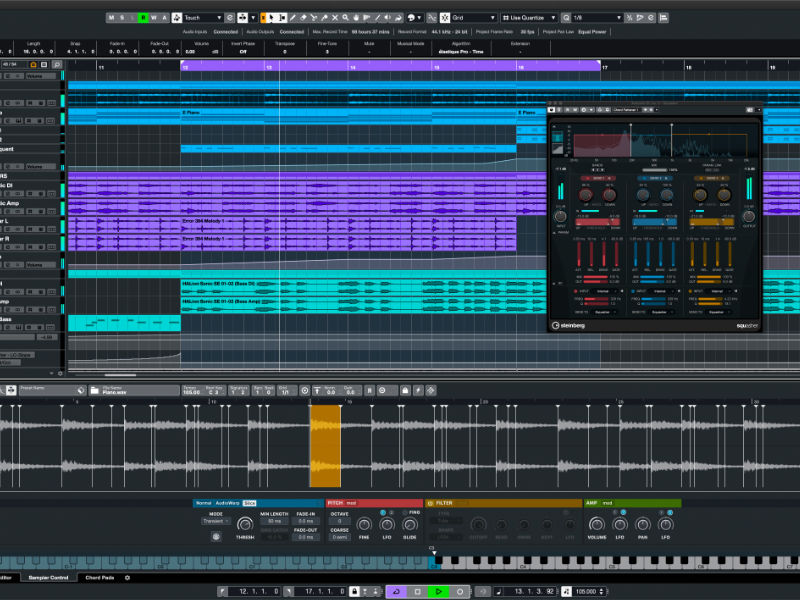
This is the weapon of choice for many Hollywood big hitters. Its video scoring facilities are spectacular and comprehensive. Former problems with exporting movies are now a thing of the past and the subtle enhancements in Cubase 11 like: bouncing a click track to audio, new super easy ways of exporting stems and much, much more, are what the Cubase fans are there for. Add to this a comprehensive set of bundled plugins, excellent editing and mixing, and native support for surround sound, and you have a very capable platform.
It has two other major advantages over most of the opposition.
It is truly cross platform working seamlessly and transferring projects between Macs and PCs. You not locked into the (arguably overpriced and increasingly unreliable – one for another article) Apple universe. PC hardware is roughly 2/3rds the price like for like, and far more customisable.
Secondly, for those building enormous projects with 1000+ tracks and integrating with software like VSL Ensemble Pro, Cubase is head and shoulders the best in class. Slightly geeky, but Cubase can address multiple MIDI ports on each device, whereas Logic can’t. This means the difference between being able to manage a few hundred tracks and a few thousand.
The downside is it doesn’t come with as wide a range of instruments and sounds included in price, and there are some users feel it hasn’t evolved as fast as some of the opposition.
Also nobody really likes the elicenser dongle, and a software only solution is long overdue.
Logic Pro X
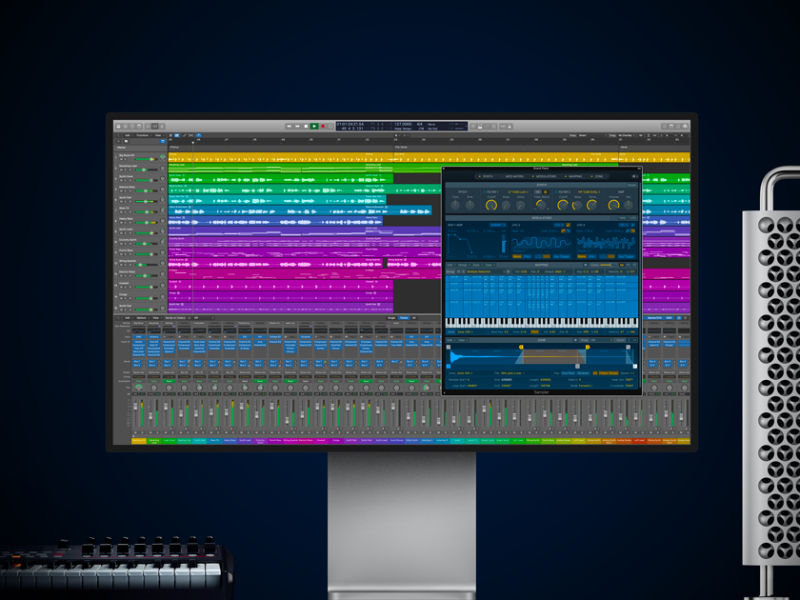
A magnificent piece of software with excellent scoring facilities that also offers tonnes to the songwriting and dance music fraternities/sororities. It integrates perfectly into the Apple hardware world and is optimised and coded from the ground up for the new M1 chips.
The collection of included instruments and plugins is extensive and really good. The Space Designer reverb is excellent. You can’t fault the move specific features either. This is software more than capable of tackling the largest and most demanding movie or game project. It lends itself best to working on sampled orchestral projects where you use a smaller number of tracks and lots of articulation switching, rather than a much larger number of tracks with individual articulations. Going with the grain and working this way definitely makes life easier. Trying to replicate the 1000+ track approach is not Logic’s forte, despite the recent welcome increase to the maximum aux track count.
There’s no dongle, elicenser or ilok to worry about either. Just download from the Apple store and off you go.
Downsides? You are locked into the Appleverse and therefore your future is dependent on Apple’s interest in supporting hardware for professional users. There are some legacy signs of the old, under the hood, murkiness like the ominious “Environment”, but you should have to delve in there less and less. Multi-timbral instruments are also not particularly well supported.
Reaper 6
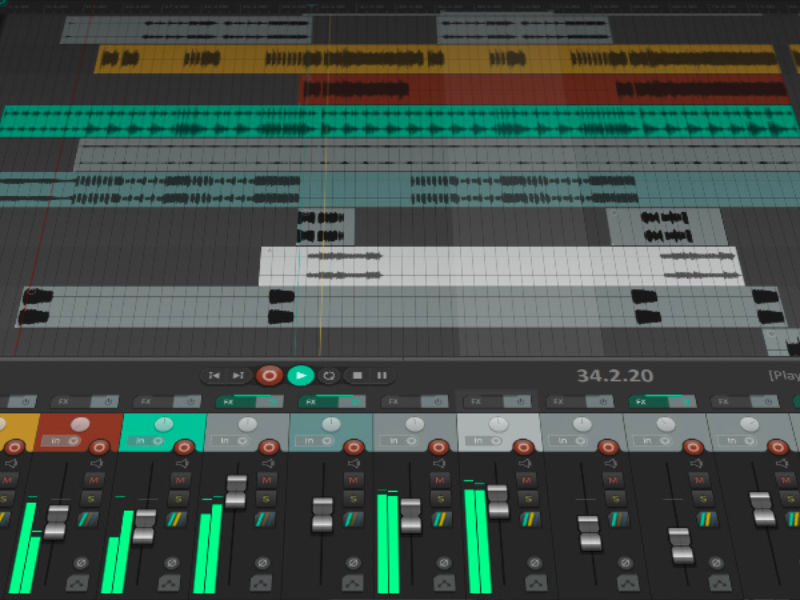
I don’t know this software well so this is going to be more brief, but it has a huge following among games composers/sound designers and seems more than capable of handling large video scoring projects. It has an intriguing approach where there are just “tracks” which can contain MIDI, audio AND video all at once! Its batch processing tools are legendary so, if you are trying to produce a load of audio elements, it is the best in the business.
It is also inexpensive, with an almost unlimited demo period and two very reasonable paid options. Instant gratification, use it for free while you work out how it fits into your world, then buy the licence that works for you.
It integrates natively with Wwise audio middleware making it even more attractive to video games audio people.
Obviously a much more limited range of bundled plugins and instruments, and more sophisticated scoring to picture features, but Reaper is a coming force not to be under-estimated!
Pro Tools (sigh)

Why (sigh)? I am not a huge fan, but it is so central to films coring workflow on orchestral sessions it’s hard to avoid.
When it comes to recording and editing studio audio, it is in a league of its own (only approached possibly by Nuendo). It has become the platform of choice so, would you rock up at Air studio in London, record the LSO, then take that back to a mix studio in LA, they would be able to just load it up and mix away. It is a universal platform with studios exchanging projects around the world. “Playlists” make managing multiple takes and comping them a breeze, so it is the mix and mastering engineers’ best friend.
Why don’t I like it then? The MIDI side is very disappointing and doesn’t come close to the facilities available in any of the other major platforms. Some people write from scratch in Pro Tools but the vast majority of composers use it for recording and mixing only.
Also, Avid. I really dislike the way they run their business to be frank. Everybody is pushed into a subscription model. The upsell is quite aggressive and the pricing is pretty eye-watering. Many users feel aggrieved at the way Pro Tools hardware is deprecated, so they are forced to upgrade constantly. We may not have a choice but to use Pro Tools, but Avid’s business model is built around maximising value out of software like Sibelius and Avid Media Composer that, like Pro Tools, have come to dominate their niche. They may be good at it, but that’s not necessarily good for the end user!
Digital Performer
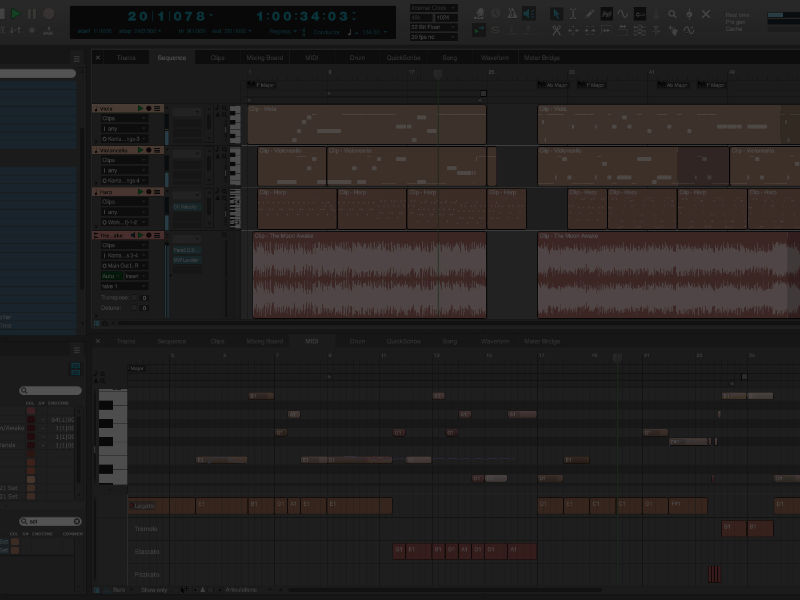
I spent many happy years on DP as it’s known and it is still a very capable bit of software. It has a unique system of “chunks” which allow you to load several cues into a single project and change from one cue to another almost instantly. Inspired! It’s what keeps high profile composers like Danny Elfman and Dario Marionelli happy.
It does everything the others do with some excellent film scoring specific features. The included instruments and plugins are OK, but not in Logic’s league to be honest. It is now cross-platform, but feels happier on a Mac than a PC (although that has improved by leaps and bounds in the recent years).
The latest version of DP11 adds a load of features that others have had for a while, like articulation maps and retrospective recording. It adds native support for the new M1 chips which, combined with its outstanding scoring, notation, and postproduction features, will keep it in contention if not put it firmly back on the map.
Conclusion
If you are already a Logic user, stick to Logic. If you are a Cubase user, stick to Cubase. Until you hit a ‘game over’ problem, a significant stability, or productivity issue, don’t be tempted by the greener grass!
Concentrate on the music!















